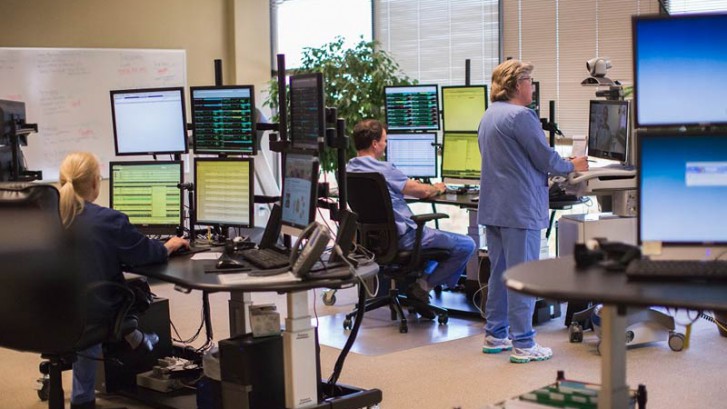Solving Mississippi’s Diabetes Problem with Telehealth and Care Management
Kristi Henderson, D.N.P. isn’t going to sugar coat things when talking about where her home state, Mississippi, ranks on various measures of health.
“We are usually among the worst in diabetes, obesity, and infant mortality rates.” says Dr. Henderson, who serves as chief telehealth & innovation officer at the University of Mississippi Medical Center (UMMC) and helps lead UMMC’s Diabetes Telehealth Network care management program. Unfortunately, the state is faced with a problem that won’t have an easy solution due to a significant lack of help and access to care.
“Our healthcare workforce is ranked last in the nation. On average, Mississippians have to drive 40 minutes to see a specialist. Most counties don’t have a diabetes specialist. There are counties that don’t have a general practitioner. That forces them to drive to see a healthcare provider, which bumps into some of our other challenges, which include the poverty we face in this state, the lack of transportation for many people, and the health literacy challenges. All of those things coupled together, no wonder we’re last in health outcomes.”
For diabetes, in particular, it’s ugly. In 2012, the Centers for Disease Control reported that 11.3 percent of Mississippians have diabetes, highest of any state. Another report indicated that diabetes expenses in the same year cost Mississippi a total of $2.74 billion. The rate of patients with diabetes could balloon to more than 60 percent by 2030, according to a grim report from the Robert Wood Johnson Foundation.
The Diabetes Telehealth Network is an attempt to improve care, and hopefully, quell those scary projections. It’s connecting, through telehealth and a care management application, UMMC specialists with diabetes patients at a rural hospital. It’s an effort from UMMC, the State of Mississippi, the Intel-GE care management company, Care Innovations, and the rural-based North Sunflower Medical Center in Ruleville, Miss. According to Henderson, the tiny city of Ruleville (pop. around 3,000) has one of the highest rates of diabetes in the country at 13.2 percent.
Mississippi Governor Phil Bryant signed on when the project was announced earlier this year. After months of planning, it launched over the summer. Stakeholders are relying upon the experience at UMMC’s Center for Telehealth, which has been existence for 12 years. “Our Center for Telehealth is all about taking the care we provide at UMMC and bringing it an cost-effective way to the patients in the community,” Henderson says.
Telehealth is vital to care management, she notes, because specialists are almost always going to stick around academic medical centers to be around other specialists. They aren’t going to small towns like Ruleville and telehealth “levels the playing field,” by bringing UMMC to them.
Along with connecting UMMC specialists to an eClinic at North Sunflower Medical Center in Ruleville, the project uses a care management application from Care Innovations. The tablet-based application monitors the patients remotely in their home tracking glucose and other diabetes-related metrics. Depending on glucose levels and where they are in the program, the patients are given educational content and videos. The results are sent back to the patient’s care team in Ruleville and at UMMC.
“It allows us to recognize early trends. Maybe their glucose level is high in the afternoon and (previously) we’d never know that if they did six month visits. It gives us a daily snapshot to help them manage their disease at home,” Henderson says.
While it’s only been going on for a few months, the early returns have been positive, says Henderson. Of the 25 or so patients enrolled in the program, there have been no trips to the emergency room (ER) visits and no hospitalizations in that two months. Hemoglobin A1C levels are dropping among the patients enrolled, she adds, and three patients have been diagnosed with early stage retinopathy (eye disease caused by diabetes). From a patient satisfaction point, it’s been a huge hit.
“We’re already hearing from patients, ‘Don’t take this away,’” Henderson says.
She and others involved with the program are eager to expand it and bring aboard new technologies. Specifically, she sees biometric monitoring, medication management technologies, wearable devices, and video home visits as the next step to the organization’s population health management efforts around diabetes and other chronic diseases.
Henderson says UMMC hopes to replicate the Diabetes Telehealth Network across the state. Ultimately, she says hopefully the project can be used for any chronic disease. One thing that will assist in this weighty initiative is the support from Bryant, who has passed legislation to reimburse providers that utilize telehealth and remote patient monitoring.
“Our business plan is there. We have a mechanism to take care of people in their home and manage their chronic disease and a model that’s scalable and sustainable,” she says. “The sky is the limit. We have a playbook that we’re writing as we go.”
If Henderson gets her wish, Ruleville, Miss. will be in headlines across the country. Those who wish to start up a chronic disease management program of their own, she says focus on the clinical need first and then the technology.
“I wouldn’t shove a technology into a clinical problem. I’d identify the clinical problem and then finding the right partner from a technology perspective that matches your needs,” she concludes.

